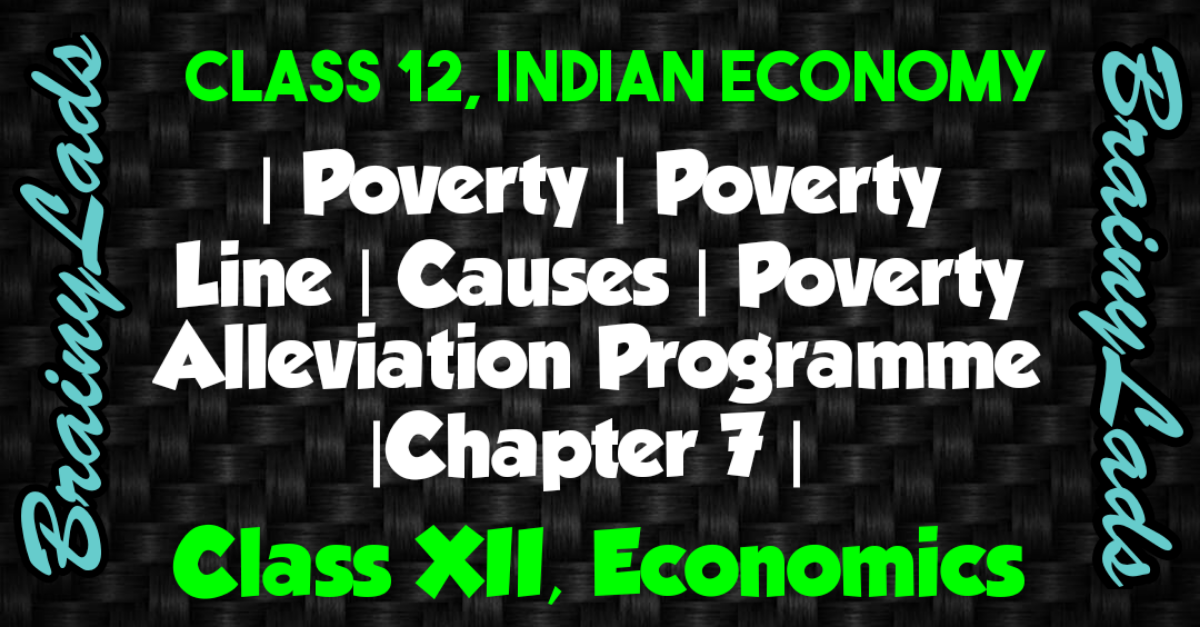Economic Planning Class 12 | Five Year Plans | Goals | Achievements |
Table of Contents
Economic Planning Class 12 | Five Year Plans | Goals | Achievements | Chapter 2 |
Economic Planning
Economic planning refers to a system which makes policies to fasten up the growth of GDP in India. It is a central authority which was set-up with the aim to achieve targets within reasonable time along with the authority to form policies as well as programs such as Planning Commission in India which was set-up in 1950 and was converted to NITI Aayog in February 2015.
Types of Planning
- Directive Planning: It refers to those plans which are initiated to direct the force of demand and supply. It is only followed by capitalist economy therefore the participation of government is least and directs private sector more so that interest of nation do not suffer due to individuals profit maximization and fulfills only economic benefits.
- Comprehensive Planning: It refers to those plans in which government participates for the growth and development of the economy. It is followed in both i.e. socialist as well as mixed economy structure therefore in socialist economy, public sector helps to increase the pace of growth whereas in mixed economy, both the sectors; private, public helps to increase the pace of growth and fulfills both social as well as economic benefits.
In India, both the areas are covered under planning like transportation, agriculture, trade are covered under economic planning whereas essentials like health, education etc. are covered under social planning.
Types of Economies
On the whole there are three types of Economies which are as follows along with their merits and demerits:
- Capitalist Economy: It refers to that economy which is controlled and owned by individual and group of individuals and guided by the profit maximization principle.
All the production means are in the hands of private individual with least government intervention and manages all the resources in such a manner that the profit can be maximized.
Merit
It promotes the self-interest through profit maximization and the pace of GDP growth is more in this type of economy.
Demerit
The collective interest or national interest suffers in this type of economy and focuses only on those goods which creates more profit therefore the rich gets richer and poor gets poorer.
2. Socialist Economy: It refers to that economy which is controlled and owned by state (government) and guided by the social justice principle.
All the production means are in the hands of public and have low level of private investors or restrict them to make such investment by artificial and natural barrier and government manages all the resources in such a manner that the social welfare can be maximized.
Merit
It helps in achieving social welfare as there is equality income distribution in the economy.
Demerit
The pace of GDP is very slow since the production is determined by equity and justice and not with profit maximization.
3. Mixed Economy: It refers to that economy which is controlled and owned by both i.e. state (government) as well as Private individuals and groups of private individuals and guided by the both principles which are social justice and profit maximization.
Merit
It helps in achieving social welfare and profit maximization as private sector fulfill the principle of profit maximization whereas the social welfare is done by the public sector to make a balance between the profit and social welfare in the economy.
Demerit
The corruption in the public sector leads to have less social welfare due to which public sectors are getting into the hands of private sectors through the process of privatization.
Related
Goals or Objectives of Economic Planning
Goals refers to the task which is fixed beforehand. It is set so that the efficiency of all the policies and programs which are framed can be measured and the resources of the countries can be differently utilize to achieve the goals.
There can be two types of goals which are as follows:
- Long-term Goals: These are those goals which are studied as objective of planning and are common in every five year plan of long term in nature i.e. more than five years.
- Growth of GDP: It is the primary objective of all the plans i.e. to increase in the level of output in the economy which leads to increase in the level of GDP (Gross Domestic Products). The increase in the level of GDP is because of the factor of resources and increase in the level of production.
- Equitable Distribution of Income: Economy will tends to give more benefits if the income of the country is equitably distributed within some criteria so that there is balance between both the sections i.e. rich and poor. This was also the one of the goal of planning in India.
NOTE: Equitable distribution of income doesn’t mean equal distribution as equal distribution means income should be distributed equally whereas equitable distribution refers to the distribution of income within some criteria so that none of the section of society lacks with money.
- Self-reliance: Self-reliance refers to the dependence on the domestic produced goods and services for the satisfaction of wants. This goal was very crucial for India as after the independence, India was not even had enough food grain to satisfy the needs of the citizens of the country and threatened by USA to stop the export of food grain if India would not stop the war with Pakistan.
- Modernization: Upgradation is very important for India. Now it can be in the terms of technology or in the terms of modern machineries and tools. Programs like Green Revolution and IT revolution in tertiary sector helps to get the pace in Indian economy.
2. Short-term Goals: These are those goals which are studied as objective of plans are of short term in nature i.e. to be achieved within five years.
- First plan focused on battling from shortage of food grain.
- Second plan focused on industrial products.
- Third plan focused on self-sufficiency of food grain.
- Fourth plan focused on acceleration of growth.
- Fifth and Sixth plan focused on poverty.
- Seventh plan focused on greater level of employment.
- Eighth plan focused on full employment level in the economy.
- Ninth plan focused on environment sustainability.
- Tenth plan focused on quality of life.
- Eleventh plan focused on protection of environment.
- Twelfth plan focused on sustainability along with growth.
NITI Aayog
- The full form of NITI Aayog stands for National Institution for Transforming India.
- The chairman of the commission is Prime Minister of India.
- Current Vice president is Dr. Rajiv Kumar and the first chairman was Mr. Arvind Panagariya.
- Planning Commission was converted into NITI Aayog on Ist January 2015.
- It is known as the ‘think tank’ of India.
- It is multidirectional flow policy which is from center to state and state to center whereas Planning Commission was one way policy which is only from center to state.
- NITI Aayog focused on 7 points namely; Pro-people, Pro-activity, Participation, Empowerment, Inclusion of all, Transparency and Equality.
Achievements of Economic Planning
The following points are the achievements of economic planning in India:
- Increase in National and per-capita Income: Before independence Indian economy was a stagnant economy as the rate of national income was just 0.5% p.a. and in twelfth plan it was 6.7% p.a. Although India fails to achieve its targeted rate but still a deadlock of stagnant economy is removed from the Indian economy.
- Increase in Savings and Investments: The rate of savings and investment increases under five year plans by which the economy start gaining a pace in terms of growth.
- Better Infrastructure: All the infrastructure like transportation, communication etc. facilities are increased in India or showed a growth. Indian Railways has become the one the largest railway network in the whole world.
- Employment facilities: With the increase in investment, level of Employment also increases in the country.
- Change in Pattern of Agriculture: A drastic Change is noted in the agriculture sector of India, from shortage of food grain to the self-sufficiency and from there to exporting surplus production to other worlds.
- Trade with other countries: During British period, the value of export was very less as compare to the value of import but with the passage of time the value of import and export gets better.
Lacks in Planning
Although, the economic planning are very helpful for the India but still there are some lacks which are as follows:
- Poverty: India could not recover itself from the trap of poverty as around 50% of the absolute poor population of the world lives in India.
- Inflation Rate: The inflation rate of India was very high which India could not tackle. With the observation of every plan, the price level is increased from the last one.
- Crises of Unemployment: India had a bulk of population as unemployed because people were illiterate and depends more on agriculture sector for living which agriculture sector could not soak.
- Inadequate of Infrastructure: The actual plans are always fails in front of targeted plans due to which there is shortage of power, health care facilities and of many other things.
Important Names to Remember
Father of Five Year Plan: Jawaharlal Nehru
Father of Indian Planning: Sir M. (Mokshagundam) Visvesvaraya KCIE FAS
Member of First Five Year Plan: Prasanta Chandra Mahalanobis
You May Also Read Indian Economy on The Eve of Independence, Economic Planning, Agriculture Sector, Strategy of Industrial Growth, India’s Foreign Trade, Economic Reforms Since 1991, Poverty, Human Capital Formation, Rural Development, Unemployment, Environment, India China Pakistan Comparative Study for better understanding of the chapters and scoring higher in upcoming exams.
Do share this post if you liked the notes of Economic Planning. For more updates, keep logging on BrainyLads


